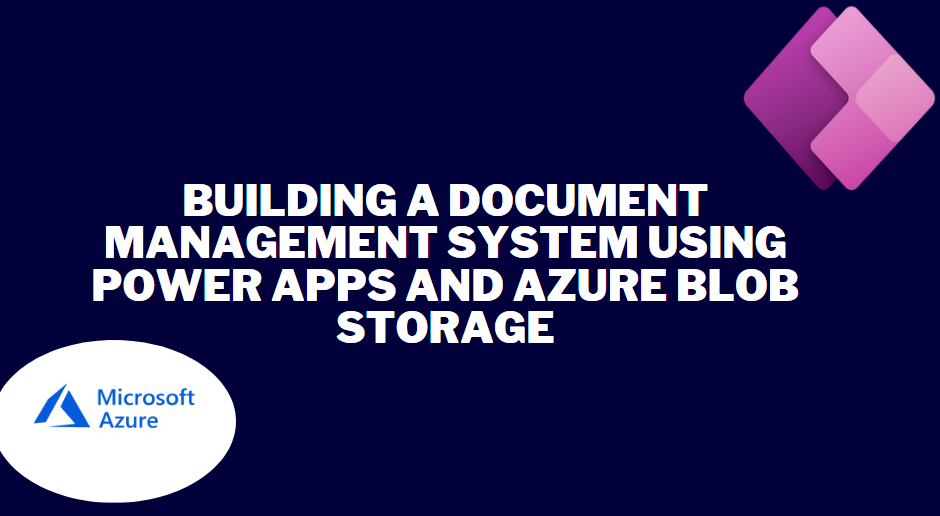Building a document management system using Power Apps and Azure Blob Storage provides a powerful solution for organizing, storing, and retrieving documents within your organization. Here’s a step-by-step guide on how to implement this system using Power Apps and Azure Blob Storage:
Step 1: Set up Azure Blob Storage Before starting, ensure that you have set up Azure Blob Storage by creating a storage account and container to store the documents.
Step 2: Create a new Power App or open an existing one Open Power Apps in the browser or the Power Apps studio on your desktop. You can choose to create a new app from scratch or open an existing app to add the document management functionality.
Step 3: Add the Azure Blob Storage connector In the Power Apps studio, navigate to the “Data” tab and click on the “Add data source” button. Select the “Azure Blob Storage” connector from the list of available connectors. This adds the connector to your app, enabling interaction with Azure Blob Storage.
Step 4: Configure the Azure Blob Storage connector After adding the Azure Blob Storage connector, configure it by providing the connection string obtained from your Azure Blob Storage account. Enter the storage account name, access key, and container name you created in Azure Blob Storage. Save the configuration.
Step 5: Design the app interface Design the interface of your Power App to include elements for document management. For example, you can add a document library view, search functionality, and options for uploading, downloading, and deleting documents.
Step 6: Implement document upload functionality To enable document upload, associate the upload button with an action. Use the “Patch” function in Power Apps to upload documents to Azure Blob Storage. Configure the upload button to trigger the Patch function and specify the target container, document name, and document content. Access the document content using appropriate methods like the “AddPicture” function or any other relevant approach. This uploads the document to Azure Blob Storage.
Step 7: Implement document retrieval functionality To retrieve and display documents from Azure Blob Storage, use a gallery control in Power Apps. Configure the gallery to retrieve document metadata such as document name, size, and date created from Azure Blob Storage. Use the “ClearCollect” or “Collect” function to populate the gallery with the document metadata. This enables users to view the list of documents stored in the document library.
Step 8: Implement document search functionality To facilitate document search, add a search box or a filter control to your Power App. Configure the search functionality to filter the document gallery based on the user’s input. Use the “Filter” or “Search” function in Power Apps to search for documents by name, type, or other relevant attributes. This allows users to quickly find the documents they need.
Step 9: Implement document download functionality To enable document download, associate a download button within the document gallery with an action. Configure the button to trigger the “Launch” function in Power Apps, along with the Azure Blob Storage connector. Provide the appropriate URL or path to the document in Azure Blob Storage. This initiates the download process, allowing users to retrieve and save the document to their local device.
Step 10: Implement document deletion functionality To enable document deletion, associate a delete button within the document gallery with an action. Configure the button to trigger the “DeleteBlob” function from the Azure Blob Storage connector. Specify the document’s path or name to be deleted from Azure Blob Storage. This removes the document from the storage container.
Step 11: Test the functionality Thoroughly test the document management system in your Power App. Upload various documents, ensure they are stored correctly in Azure Blob Storage, search for and retrieve documents, download them, and delete documents as required. Validate that the system functions properly,

